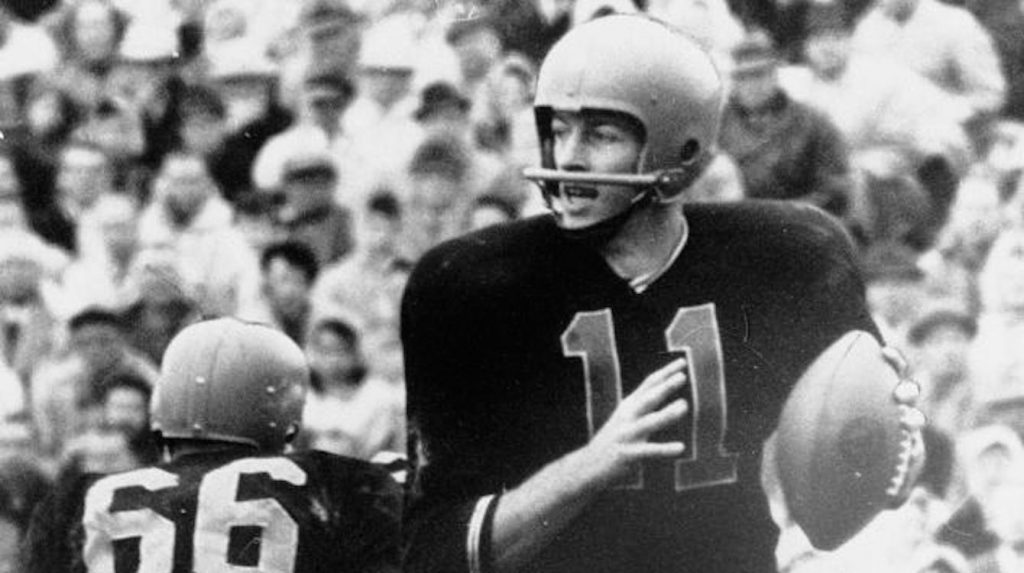
This Week in Heisman History: Terry Baker’s 6 TDs sink Iowa State

For the first year of its existence, the Heisman Trophy was given to the “best football player in the East”. The next year, that definition was broadened to the rest of the country, but it would take another 26 seasons before a player from the West Coast was handed the trophy.
That player was Terry Baker of Oregon State. This week in Heisman history, his epic season got underway in dramatic fashion against Iowa State in Portland, Ore.
Oregon State was coming off a 5-5 record in 1961, the year the Beavers switched to a T-formation offense to better suit the talents of Baker, a dynamic, dual-threat junior quarterback. He did a fine job directing the offense in that transition year, passing for 875 yards and rushing for 375 more and a combined seven touchdowns. But he would take his game to the next level as a senior, putting up numbers that would compare favorably to the dual-threat quarterbacks of the modern era.
The first game of the season was against the Cyclones, who were also coming off a 5-5 mark. They were led by running back Dave Hoppman, who led the nation in total offense in 1961 with 1,638 combined running and passing yards. The matchup with the Beavers on Sept. 22, 1962, was billed as a potential shootout and it did not disappoint.
Things didn’t go Oregon State’s way in the beginning. Hoppman scored on touchdown runs of 48 and 1 yards as the Cyclones jumped out to a 21-13 lead at the half. That lead moved to 28-13 in the third quarter and prospects looked dismal for the Beavers.
But Baker brought OSU back. He scored two touchdowns and threw a touchdown pass as the Beavers moved ahead, 33-28, early in the fourth quarter. Iowa State rallied on a touchdown catch by Dave Limerick to regain the lead, 35-33, but Baker hit Jerry Neil on a 5-yard touchdown pass with 36 seconds remaining to give the Beavers a dramatic 39-35 victory.
Baker finished 16 of 30 passing for 252 yards and three touchdowns (with one interception). He also rushed for 65 yards and three touchdowns on 16 carries. He totaled 317 yards of offense and six touchdowns, averaging nearly seven yards per play. Twelve of his passes for 165 yards and two touchdowns went to receiver Vern Burke, who would join Baker as a 1962 All-American.
Baker went on to lead the Beavers to a 9-2 record and a win over Villanova in the Liberty Bowl, a game in which the only score was his 99-yard touchdown run.
On the season, Baker finished with 1,723 passing yards and 15 touchdowns with just five interceptions and he also rushed for 538 yards and nine scores. He beat out LSU’s Jerry Stovall for the Heisman in a close race, notching 707 points to Stovall’s 618.
His 2,261 yards of total offense was a Heisman record until surpassed by Pat Sullivan in 1971.
Baker accomplishments opened the way for West Coast players to win the Heisman as players from that region won four of the next eight trophies.




